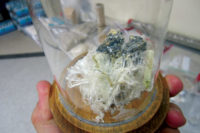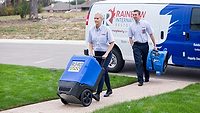Best Practices for Asbestos Remediation in Historical Restoration Projects

Photo credit: bermau / iStock / Getty Images Plus via Getty Images
The word “asbestos” elicits a fear response in many people for a good reason. This common insulating material exists in multiple places in older homes, causing headaches for those involved in historical restoration projects. Remediation measures require a special touch to protect human health and safety.
What should people know if they own such a property or work in the trades? Here are the best practices for asbestos remediation in historical restoration projects.
The Risks of Asbestos
Many people first hear the word “asbestos” in television commercials by law firms representing plaintiffs diagnosed with mesothelioma. This aggressive and deadly cancer form first came into public awareness after H.L. Wedler discovered an association between asbestosis and cancer of the pleura among German workers who regularly handled the substance in the 1940s1.
However, the political climate at the time prevented news of the discovery from spreading until 1960, when the British Journal of Medicine detailed 33 cases of mesothelioma among South African workers in asbestos mines and those who lived in the surrounding area. While lung cancer and mesothelioma are the most common consequences of asbestos exposure, they aren’t the only risks. Inhaling the fibers can also lead to the following2.
- Asbestosis: A lung condition marked by pulmonary fibrosis or scarred lung tissue. It can cause difficulties with breathing and exertion.
- Other cancer forms: Scientists have also found an association between asbestos exposure and testicular, laryngeal, ovarian and various abdominal cancers.
Best Practices for Asbestos Remediation
Understand that not all asbestos requires remediation. Although most products today no longer contain it, older buildings may have it in numerous places — but it may not cause issues. If the material containing it is undamaged and in good shape, there is no need to take action.
Intact asbestos doesn’t cause issues. It’s when the fibers become airborne that they can enter your lungs and create damage. Follow this process for assessing your property and taking the proper remediation steps.
1. Understand Where Asbestos Lurks
Asbestos may occur in the following locations3.
- Around steam pipes, boilers and furnace ducts
- In vinyl asbestos, sheet vinyl, asphalt and rubber flooring
- Millboard, paper and cement sheets
- Door gaskets in wood stoves
- In soundproofing materials
- Patching, joint compounds and textured paints
- Shingles and siding
- Artificial ashes and embers in gas fireplaces
- Fireplace gloves, stove-top pads, ironing board covers and hairdryers
- Automotive brake pads, linings, clutch facings and gaskets
2. Determine If Repair or Removal Is the Best Course of Action
In general, remediation is your best bet. Asbestos fibers become dangerous when disturbed, and most repairs create less of a risk than ripping everything apart and starting fresh.
You can’t tell if something in a historical restoration project contains asbestos without a test. Doing so requires following proper procedures, including removing everyone else from the area and covering it and yourself with protective equipment to mitigate health risks. Calling a professional is usually your best bet, although you can buy DIY test kits.
3. Review Safety Procedures with All Staff before Removal
All asbestos remediation and removal procedures begin with a safety briefing for everyone involved in the process. It doesn’t matter if these professionals have heard the advice a thousand times before — it’s like a flight attendant reminding frequent flyers to wear their seatbelts.
Reviewing procedures and having workers sign a contract that they have received the requisite training protects individuals and firms from potential liability. If a worker takes unnecessary risks like removing PPE in the workplace, the responsible party has evidence that they informed the individual about the dangers.
4. Sequester the Work Area
Asbestos fibers can easily spread through the air. Therefore, work crews should cordon off the area with heavy plastic and duct tape. Additionally, they should shut down the HVAC system while remediation continues.
Learn more about safely handling environmental hazards on restoration jobs
5. Prevent Spread to Other Areas
Workers should not enter other parts of the property while engaged in asbestos removal. Crew chiefs should ensure access to restroom facilities before work begins.
After the job is completed, those involved should remove all clothing and equipment and place them in sealed, leak-proof plastic bags.
6. Follow Proper Cleanup Protocols
It’s not sufficient to do the work and go. Upon completion, crews should clean the area well with rags, wet sponges, wet mops and HEPA vacuums. They should not use regular vacuum cleaners but devices are dedicated to asbestos jobs.
Wetting surfaces prevents fibers from spreading during cleanup. Dusting and sweeping debris creates risk, as it releases fibers into the air.
Asbestos is a word that strikes fear in many for good reasons. Loose fibers from damaged property can pose severe health risks when remediating historical restoration projects.
However, following the proper protocol keeps those involved in the remediation process safe. Review these guidelines for best practices before attempting asbestos remediation or removal when restoring your property.
Sources
1. The Mesothelioma Center. “The History of Mesothelioma.” Retrieved from: https://www.asbestos.com/mesothelioma/history/#:~:text=J.C.%20Wagner%20and%20physician%20Chris,in%20residents%20of%20South%20Africa.
2. TRC Companies. “What Is Asbestos?” Retrieved from: https://www.trccompanies.com/insights/what-is-asbestos/
3. U.S. Consumer Product Safety Commission. “Asbestos in the Home.” Retrieved from: https://www.cpsc.gov/safety-education/safety-guides/home/asbestos-home
Looking for a reprint of this article?
From high-res PDFs to custom plaques, order your copy today!






